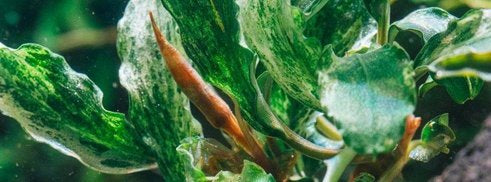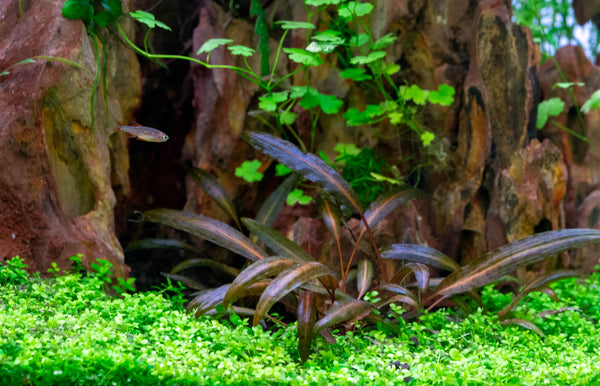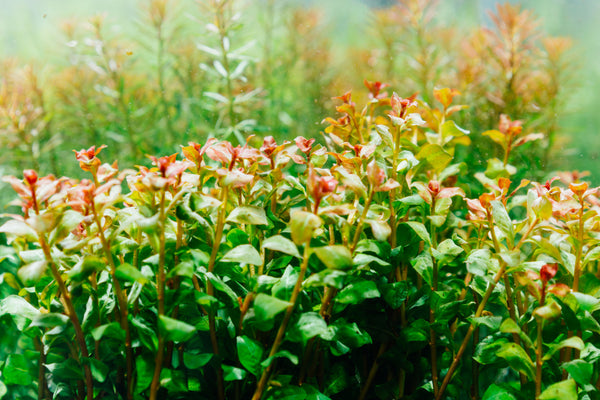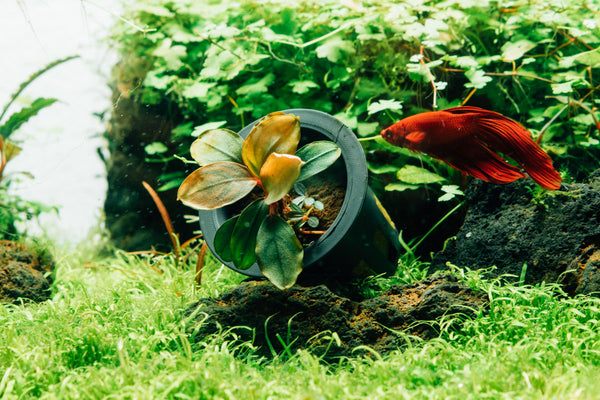
Easy Aquarium Plants for Beginners and Beyond
KEEP IT SIMPLE, SCAPER
When you’re new to aquascaping and planted tanks, it can be tempting to go straight for the most obscure, challenging plants you can get your hands on. If you can, resist that impulse. Some of the most beautiful aquarium plants also happen to be among the least difficult to grow. One of my secrets is that I purposely choose the easiest plants I can; why risk it all on HC “Cuba” when Micranthemum ‘Monte Carlo’ will more than suffice? Whether you have no idea what I am talking about or you know all too well, read on for some great low maintenance plant suggestions.
THE COUNT OF MONTE CARLO
Monte Carlo is my go-to carpeting plant. Many people erroneously lump it into the category of ‘high tech’ plants- that is, plants requiring CO2 injection- without realizing that it will thrive with or without supplemented co2. Like all of the plants on this list, it will grow well in low tech or high tech conditions- the speed and density of growth will just be faster with injected CO2. To plant, simply cut into small stem portions and bury them in the substrate such that only a small portion of the plant is visible. Be sure to plant evenly and densely for quicker results.

MONSTERS OF MIDGROUND
In terms of midground plants, Alternanthera Reineckii is an easy plant for working some color into your scape. As with all stem plants, the more you trim, the more it will branch, so keep this in mind if you’d like to achieve a bushy look. It’s a heavy root feeder, so it will do best with an enriched substrate like UNS Controsoil. Of course, Cryptocoryne species are another famous group of root feeders that are great for the midground, but they grow significantly slower than Alternanthera species.
Another favorite midground plant (this one can also be used as a background plant if desired) is Hemianthus Glomeratus. An extremely fast grower with or without CO2, it can quickly become a weed in your aquarium if left unchecked. I like to mix it amongst other stem plants for a bit of color and texture variety, and for extra density.

BACK BACK BACK IT UP
Moving to background plants, Ludwigia sp. ‘red mini’ is one of the few plants that will show out with deep red colors even in moderate lighting conditions. With a good light fixture, it will be just as red in a low tech environment as in a high tech environment. Rotala ‘green’ will do well in almost any planted setup, as will its cousin ‘colorata.’ Like I previously mentioned, planting each of these in dense groupings right from the start, and trimming the stems as they grow, will ensure that you avoid that leggy, sparse background look that plagues many beginning aquarists.

STAGE 4 CLINGERS
Epiphytes or plants that are the happiest growing attached to rocks or wood, can add great interest to your tank and require very little maintenance. Instead of the usual java moss, try to get your hands on Christmas moss or Mini Pellia- both are just as easy to cultivate as the more popular java moss, but have a much tighter, more beautiful growing habit and with deeper colors. Perennial favorites, Anubias and Bucephalandra are extremely easy to grow and demand little from the aquarist in terms of time spent trimming or on CO2 supplementation.
With proper attention to water parameters, lighting, fertilization, and substrate selection, almost anyone can grow almost any plant. With that said, the plants that I just outlined are stunning and super tolerant of any mishaps or inconsistencies that beginner aquarists may encounter as they refine their craft. Give them a shot and you’ll have an ironclad lineup that you can add to as you build up your skill level and plant collection!
For more easy freshwater aquarium plants, check out our Easy Aquarium Plants collection!
Tell us - Was this article helpful? Please leave a comment below!
If you have any questions regarding this article, please DM us on Instagram, Facebook, or email support@buceplant.com so we can assist you - @buceplant





Comments
Leave a comment